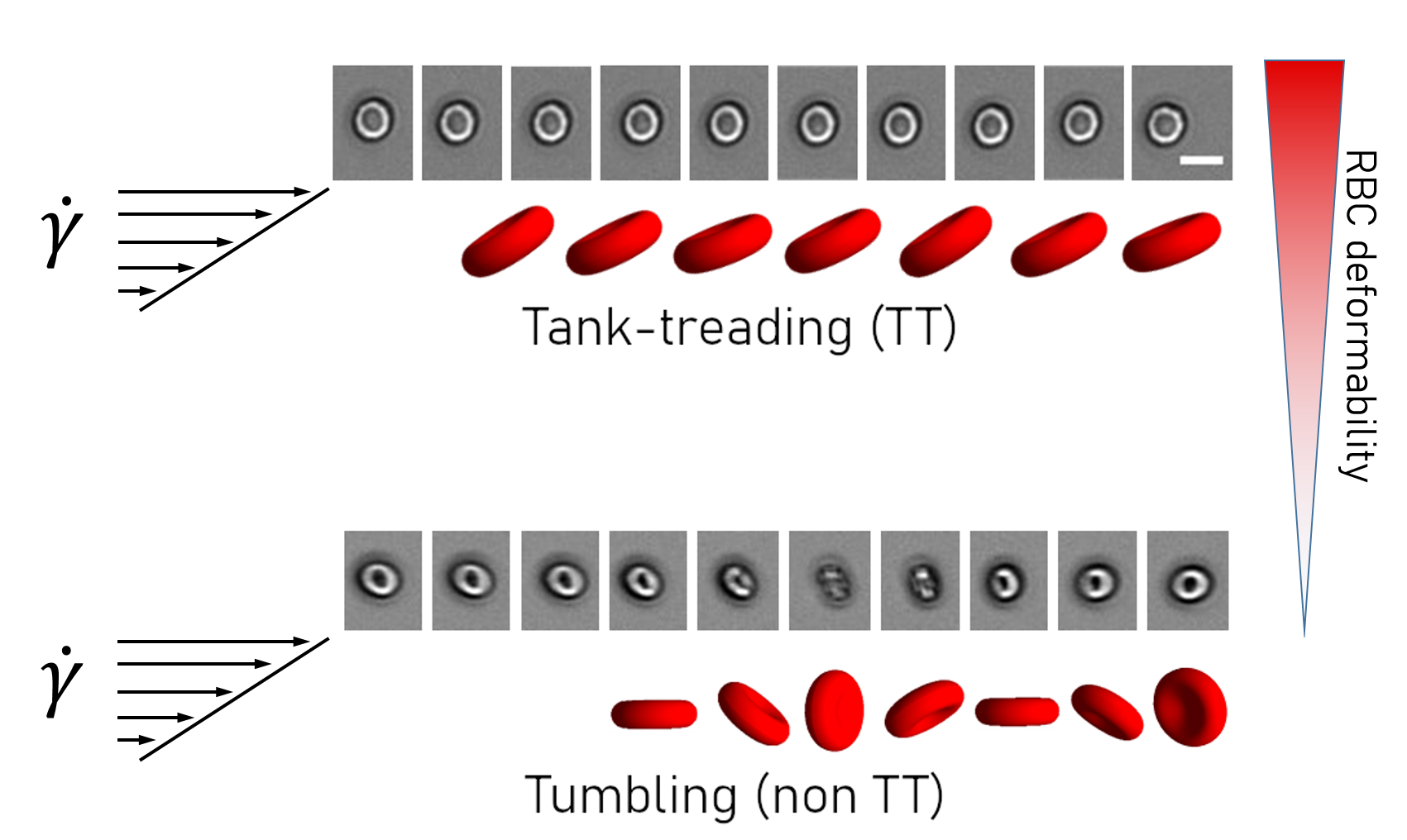Our innovation: The fTT biomarker
ICOVELL’s technology combines millifluidic, videomicroscopy and data processing by machine learning. ICOVELL’s innovation is to use the movement of red blood cells subjected to shear stress in a flow to determine their deformability. At a given shear stress, there is a critical threshold of deformability above which the movement of a red blood cell is that of a fluid drop and below which its movement is that of a solid. In fluid drop behaviour, the orientation of the red blood cell is fixed and the membrane of the red blood cell rotates on itself (‘tank-treading’ motion, TT). In solid behaviour, the orientation of the red blood cell changes over time, and it behaves like a coin (‘tumbling’ movement). The measurement represents the fraction of red blood cells performing a Tank-Treading (TT) movement: this is the deformability marker called fTT.

ICOVELL’s technology competitive advantages
Simplicity – No complicated setup required.
Single-cell measurement – ICOVELL’s technology measures the individual movement of red blood cells in the population. It is sensitive to a low percentage of abnormalities.
Low measurement bias – Measurements are performed at physiological shear rate conditions.
Bright field visualization – Observation of red blood cells flowing during measurement.
Our Scientific publications
- A novel red blood cell deformability biomarker is associated with hemolysis and vaso-occlusive crises in sickle cell disease. M. Sahun, E. Bernit, S. Atwell, A. Hornung, A.M. Charrier, I. Agouti, N. Bonello-Palot, M. Cerino, E. Helfer, C. Badens, A. Viallat, Scientific Reports 15, 15864 (2025). https//doi.org/10.1038/s41598-025-00152-w
- Classification of red cell dynamics with convolutional and recurrent neural networks : a sickle cell disease case study. Darrin, M., Samudre, A., Sahun, M., Atwell, S., Badens, C., Charrier, A., … & Giffard-Roisin, S. Scientific Reports, 13(1), 745 (2023). https://doi.org/10.1038/s41598-023-27718-w
- Dynamics of individual red blood cells under shear flow: a way to discriminate deformability alterations. Atwell, S., Badens, C., Charrier, A., Helfer, E., & Viallat, A. Frontiers in Physiology, 12, 2406 (2022). https ://doi.org/10.3389%2Ffphys.2021.775584
- A simple model to understand the effect of membrane shear elasticity and stress-free shape on the motion of red blood cells in shear flow. Dupire J., Abkarian M., Viallat A. Soft matter 11, 8372-8382 (2015). https://doi.org/10.1039/C5SM01407G
- Red blood cell: from its mechanics to its motion in shear flow. A. Viallat, M. Abkarian, Int. Jnl. Lab. Hem. 36, 237–243 (2014). https://doi.org/10.1111/ijlh.12233
- Full dynamics of a red blood cell in shear flow. Dupire J., Socol M., Viallat A. Proc. Nat. Acad. Sci. 109, 20808-20813 (2012). https://www.pnas.org/doi/full/10.1073/pnas.1210236109
- Patent: Méthode et dispositif de détermination de la déformabilité de globule rouge. Annie Viallat, Emmanuèle Helfer, Catherine Badens, Scott Atwell et Anne Charrier. EP3821241 B1, US20220341919 A1
